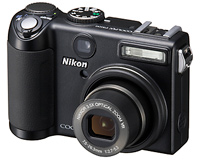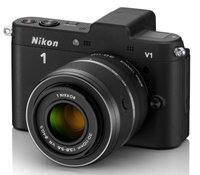Physically, the Coolpix 8400 looks like a chunky version of the 5-megapixel Coolpix 5400 but has a wider angle of view, an electronic viewfinder and larger monitor, plus an LCD data display on the top panel. The menu systems are identical in both cameras but the 8400’s flash pops up and the mode dial sits above the command wheel on the top left corner of the camera body.










